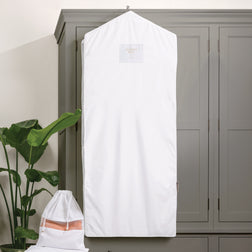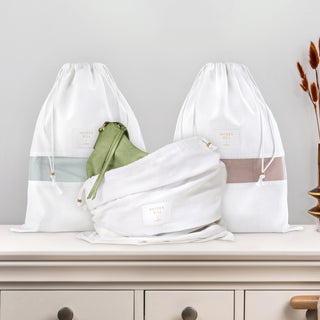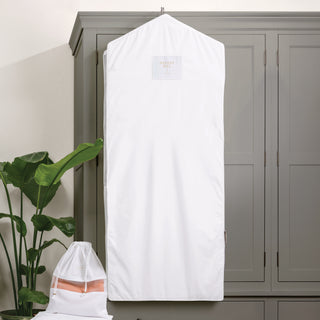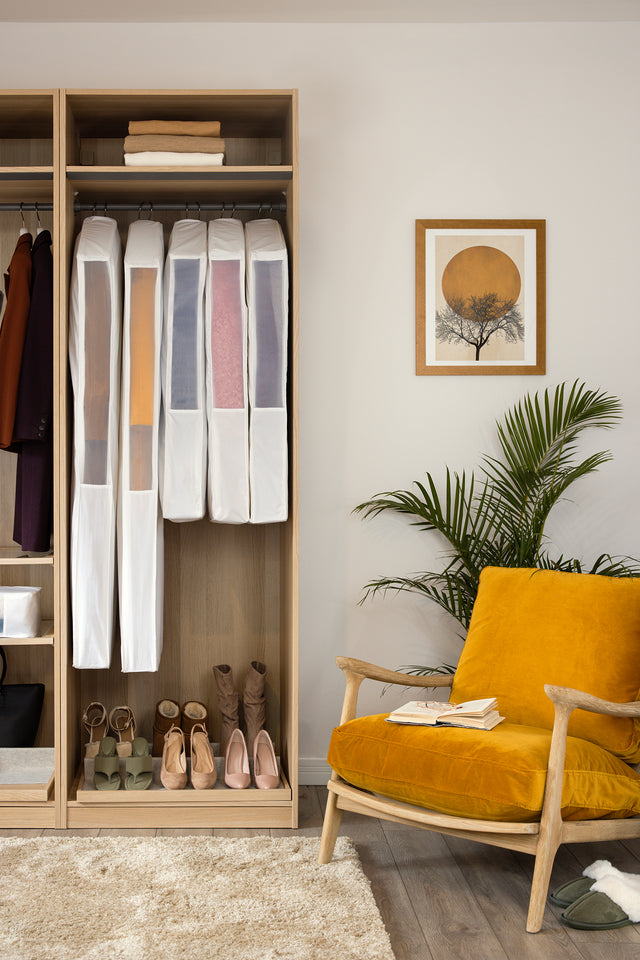What is slow fashion and why is it important to shop sustainably? This guide answers all your questions related to slow fashion and sustainability.
Environmental issues are constantly in the news, and it seems everyone has an opinion about the state of our planet. The Dalai Lama said, “It is our collective and individual responsibility to preserve and tend to the environment in which we all live.”
There is much we can do to protect our environment including recycling, conserving water, and making eco-friendly purchases. One way to shop sustainably is by embracing slow fashion.
What is Slow Fashion?
Slow fashion was developed as an alternative to fast fashion. So, the best way to understand slow fashion is to compare it to fast fashion. Fast fashion refers to the fashion industry’s current prioritisation of the fast, mass production of clothing.
If you follow a variety of clothing designers, you’ve likely noticed that they release ‘new lines’ of clothing more often than in the past. Many fast fashion designers introduce new clothing collections about once a week.
This emphasis on fast production of clothing creates a range of problems that slow fashion aims to solve. These include low-quality pieces, human rights violations, abuse of natural resources, threats to our health and the health of others, and other negative impacts on the environment.
Slow fashion counters fast fashion by engaging in more sustainable practices, reducing waste, protecting the environment, and advocating for human rights. Slow fashion places an emphasis on making consumers more aware of how their clothing is made and the resources used in its production. It encourages choosing high-quality and long-lasting items that can be used for many years to come and won’t end up in a landfill.
When was Slow Fashion Started?
Kate Fletcher, from the Centre for Sustainable Fashion, was the first to coin the term ‘slow fashion’ in 2007, though the origins of the movement can be traced much farther back than that. Shortly following the invention of mass production of clothing in the 1950s, some consumers began pushing back against these methods. Groups that disagreed with mass production and current fashion trends included hippies, individuals in the punk and goth movements, those against the use of animal fur in the fashion industry, and countless others.
Sustainable fashion and ethical fashion movements demanded clothing manufacturers change their practices. In 2013, the support for the slow, sustainable fashion movement grew considerably following the collapse of the Rana Plaza in Bangladesh, which resulted in the death of 1,138 garment workers.
What are the Principles of Slow Fashion?

Slow fashion was created in direct opposition to fast fashion practices and its core principles reflect this:
- Use of sustainable and high-quality materials: Slow fashion focuses on producing high-quality garments that will last for years and won’t end up in landfills. To achieve this, sustainably-sourced, high-quality textiles, such as linen, are often used to make slow wear.
- Timeless design: Slow fashion doesn’t cater to current trends that can be here today and gone tomorrow. Rather, manufacturers opt for more timeless designs that will be fashionable for years to come.
- Sourced, produced, and sold locally: Often, slow clothes are made and sold in the same community using locally sourced materials. This not only reduces the environmental impact of shipping items, but it also supports the communities where the clothes are sold by providing jobs.
- Made by workers receiving a fair wage: Fast fashion manufacturers are infamous for exploiting workers and not paying them living wages. Slow fashion prioritises offering fair, living wages to clothing workers.
- Fewer ‘new collection’ releases: Rather than adopting the fast fashion model of weekly new releases, slow fashion offers seasonal releases of a few new garments.
- Made-to-order: Slow fashion items are sometimes made-to-order to further reduce waste and only produce items for which there is a specific demand.
Why is the Slow Fashion Movement Important?
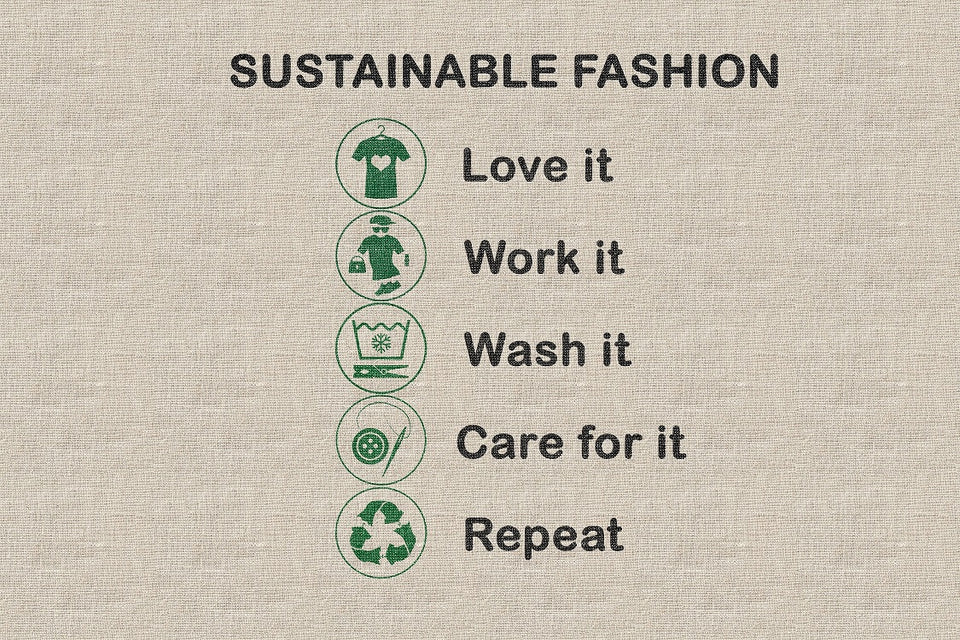
Research also shows that embracing slow fashion is important to environmental and human rights causes.
-
Clothing purchases have increased dramatically over the past few years.
A McKinsey Sustainability study showed that between 2000 and 2014, consumer spending on clothing increased 60 percent. This increase is likely due to fast fashion’s quickly changing fashion trends and the consumer's perceived need to stay in style. Additionally, since many fast fashion clothes are cheaply made, they don’t last as long as higher quality pieces. This creates the need to purchase more clothing to replace what has torn or worn down after only a few uses. -
Tons of clothes end up in landfills every month.
Another side effect of an increase in clothing purchases is that more clothes end up in landfills every year. The EPA estimates that 17 million tons of textiles were sent to landfills in 2018. When you consider that many textiles take over 200 years to decompose, it quickly becomes evident how devastating this statistic is. Just 20 years ago, we only produced about half this amount of textile waste. -
Many garment workers are not paid fair wages.
Slow fashion also opposes the unfair wages that many fast fashion garment workers are paid. A study of Bangladesh garment workers revealed that many only make an average of $96 each month. It is common practice for fast fashion manufacturers to also exploit child labour in countries where child labour laws are less strict than those of the United States. -
More clothing production equals more water use.
Did you know that an estimated 2,700 litters of water are needed to produce one cotton shirt? Clearly, those who adopt slow fashion have a positive impact on our environment and conserve natural resources.

How Can I Become More Involved in the Slow Fashion Movement?
If you value slow fashion principles such as reducing clothing waste, protecting the environment, and ensuring fair pay for garment makers, there are several ways to get involved.
-
Buy less clothing, but buy the best quality.
When you love to shop and you also care about protecting the environment, you may feel torn about adopting slow fashion. It’s true that one of the easiest ways to practice slow fashion is to reduce the amount of new clothes you buy. However, it’s also possible to strike a balance between never shopping and shopping without restraint.
Before shopping, it’s helpful to know what is in your closet. Taking some time to sort through what you own will help reacquaint you with what you already have and help you determine what your wardrobe is missing. Then, you will be able to shop for needed pieces.
And, though it is tempting to purchase an item that is on sale, it’s only a great deal if the piece is also of the highest quality. Higher quality garments are made of higher-end fabrics that feel and look better, last longer, and therefore, better for the environment.
-
Pay attention to clothing labels.
Another slow fashion practice is the use of sustainable, Earth-friendly materials. Before purchasing an item, take a close look at the materials used to make it. Avoid synthetic fibres like acrylic, polyester, nylon, lycra, and spandex. These fabrics are typically made using petroleum-based plastic, which isn’t good for the environment.
Instead, look for sustainable fabrics that don’t endanger the Earth, such as organic cotton, recycled cotton, ethically-sourced wool, hemp fabric, organic bamboo, organic linen, and cork fabric.

-
Change how you shop for new clothes.
Rather than shop at large chains or online retailers, support local businesses. Find locally owned clothing stores in your area, or if you’d prefer to shop online, look for independent clothing manufacturers who make and sell their own pieces.
It’s also important to patronise slow fashion companies so their businesses and manufacturing practices will continue to thrive. A few of those companies include; -
Use shopping as an opportunity to advance human rights.
Do your research before shopping and look for companies that pay their workers fairly. Many companies, especially those who offer fair pay, include this information on their website.
If you can’t find specific information about worker pay for a brand you like, or don’t like the information you find, email the company. When more and more customers refuse to support a company until they provide fair compensation to their workers, the company will be forced to make changes. Encourage your friends to contact their favourite brands as well.
Make a Difference by Joining the Slow Fashion Movement
Shopping with companies that practice sustainable manufacturing and fair worker compensation is a great way to show your support for slow fashion. With your spending dollars, you can help fight fast fashion, which threatens our planet, fills up our landfills, and exploits workers.


